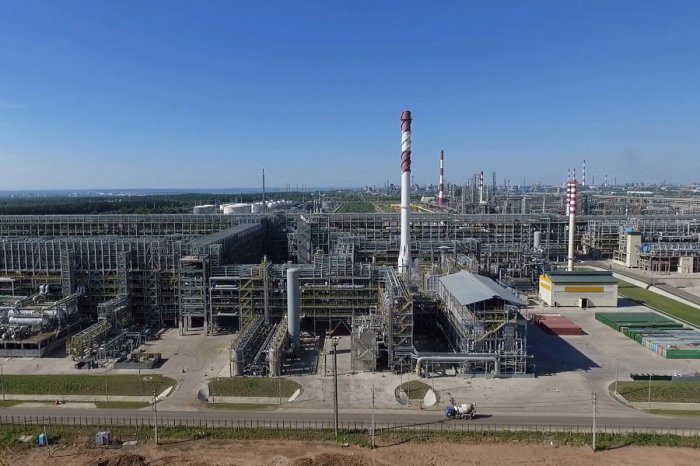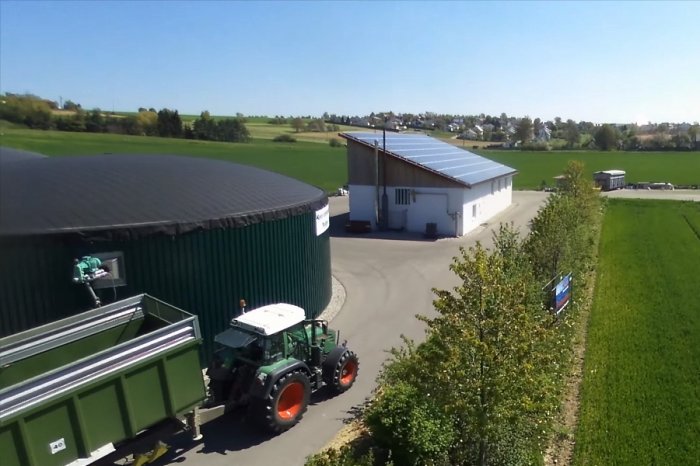After receiving the necessary documents (application form and project presentation), our team will try to review your request as soon as possible, and leading experts will offer the best options for project funding.
With the latest technological advancements and increasing environmental concerns, modernizing mining and processing plants has become a top priority for industry stakeholders.
Mining and processing plant modernization represents a transformative opportunity for companies to achieve greater production efficiency, cost savings, and environmental sustainability.
With the projected investments of $250 billion in modernization projects by 2030, the industry is prepared for significant advancements.
Importance of mining and processing plant modernization
Modernization is critical for modern globalized mining industry, driven by the need for enhanced economical efficiency and environmental sustainability.Modern mining and processing plants are at the heart of the resource extraction and production process. However, many of these facilities face challenges due to aging infrastructure, outdated extraction technologies, and increasing environmental concerns. Modernization addresses these issues by leveraging advanced technologies, optimizing key processes, and adopting sustainable practices.
Current problems faced by mining and processing plants
Mining companies encounter several serious challenges that hinder their operational efficiency and sustainability.It is crucial to understand these problems to grasp the significance of modernization:
1. Aging industrial infrastructure. Many mining and processing plants have outdated infrastructure, the age of which often exceeds 40-50 years, that limits capacity, efficiency, and safety. Aging main equipment and systems require frequent maintenance, resulting in increased downtime and reduced productivity.
2. Inefficient processes. Traditional mining and processing methods often involve inefficient workflows and manual labor, leading to resource wastage and sub-optimal productivity. Inadequate process optimization can result in excessive energy and water consumption, further impacting operational costs and environmental sustainability.
3. Environmental footprint. The mining industry in recent decades has faced problems due to its environmental impact, including land degradation, water pollution, and greenhouse gas emissions. Regulations and public pressure demand a more sustainable approach, requiring mining companies to reduce their environmental footprint.
Benefits of modernization for large mining companies
By financing modernization project, mining companies can unlock a multitude of benefits.Enhanced efficiency
Upgrading equipment and implementing digital automation technologies / streamline operations reduce downtime and improve overall productivity. Modernized facilities of this type widely use advanced robotics, AI, and data analytics to optimize workflows and boost efficiency.Cost savings
Outdated plants often incur high maintenance costs and consume excessive energy and resources. Modernization initiatives enable companies to reduce operational expenses, minimize waste, and improve profitability through energy-efficient technologies and optimized resource utilization.Environmental sustainability
Modernization is a crucial step towards achieving sustainable mining practices. Upgraded facilities can implement advanced waste management systems, water recycling technologies, and emissions control mechanisms. This leads to reduced environmental impacts, improved regulatory compliance, and enhanced corporate social responsibility.Competitive advantage
Modernized mining and processing plants enhance a company's competitiveness in the global scale. Improved productivity, cost savings, and sustainability measures contribute to a stronger market position, attracting investors and stakeholders who prioritize responsible and efficient operations.As we can see, by prioritizing modernization, mining companies can address serious operational challenges, reduce their environmental footprint, and position themselves as leaders in the industry.
Several examples of large modernization projects in mining industry
Mining and processing plant modernization initiatives have made significant progress around the world. This chapter presents several noteworthy projects from the USA, Europe, Australia, India and Saudi Arabia, showing the tangible benefits achieved through modernization efforts.Eagle Mine, USA (high-grade nickel and copper mining)
Eagle Mine, located in Michigan, underwent a comprehensive modernization with an investment of $600 million. The project focused on implementing advanced automation and digital technologies to optimize mining operations and improve safety. As a result, Eagle Mine achieved a 20% increase in productivity and a 30% reduction in energy consumption.Garpenberg Mine, Sweden (zinc, lead, silver, copper and gold)
Boliden's Garpenberg Mine is currently recognized as one of the most technically advanced and efficient mines in the world. With an investment of over €600 million, this project included upgrades to equipment, ventilation systems, and process optimization. The project led to a 25% increase in production capacity, a 50% reduction in energy consumption, and an impressive 70% reduction in water usage.Olympic Dam, Australia (large poly-metallic mining facility)
BHP's Olympic Dam mine in South Australia underwent an expensive modernization program to enhance operational efficiency and sustainability.With an investment of about AUD 600 million, the project focused on implementing advanced processing technologies and automation. The modernization efforts resulted in a 15% increase in copper production and a 10% reduction in greenhouse gas emissions.
Khetri Copper Complex, India (production of copper)
Khetri Copper Complex in Rajasthan, owned by Hindustan Copper Limited, underwent large modernization program to optimize processes and enhance production capacity. With an investment of INR 2,800 crore, the project involved the installation of state-of-the-art equipment and control systems. The modernization efforts led to a 30% increase in copper production and a significant reduction in process water consumption.Ma'aden Phosphate Company, Saudi Arabia
Ma'aden Phosphate Company's modernization project in Saudi Arabia aimed to increase phosphate production and improve energy efficiency. With an investment of SAR 4 billion (more than 1 billion US dollars), the project implemented advanced technologies and process enhancements. These efforts resulted in a 15% increase in production and a 20% reduction in energy consumption.These striking examples demonstrate the positive outcomes that can be achieved through mining and processing plant modernization. From increased productivity and resource optimization to enhanced environmental sustainability and operational efficiency, these projects highlight the transformative potential of modernization initiatives in the mining industry.
Funding and financing options for modernization
Modernizing mining and processing plants requires significant investment. Fortunately, various funding sources are currently available to support these projects, including bank loans, long-term loans from private investors, government funding and other sources.
Equity financing
Private equity firms invest in mining projects by acquiring ownership stakes in companies or assets.They provide capital in exchange for equity shares and participate in strategic decision-making. Private equity firms bring financial expertise, industry connections, and operational guidance to support modernization projects.
Venture capital investors focus on early-stage or high-growth mining companies. They provide funding in exchange for equity and often offer mentorship and industry-specific knowledge. Venture capital firms are attracted to innovative technologies and projects with significant growth potential.
Debt financing
Mining companies can secure loans from banks to fund modernization projects.These loans provide access to a lump sum of capital, which is repaid over a specified period, typically with interest. Banks assess the project's feasibility, financial health, and collateral before extending credit.
Project Finance (PF) involves securing long-term debt based on the project's cash flow rather than the company's balance sheet. Lenders evaluate the project's viability, revenue generation potential, and risk profile. Repayment is typically tied to the project's cash flows and does not solely rely on the company's financial performance.
Mining companies can also issue bonds to raise capital for modernization projects. Bonds are debt instruments where investors lend money to the company for a fixed period at a specified interest rate. The company makes periodic interest payments and repays the principal amount at maturity.
Government Funding
Governments often offer grants to support mining and processing plant modernization, especially for research and development, environmental initiatives, and sustainable practices. These grants do not require repayment and provide essential financial assistance.Governments may also offer subsidies or tax incentives to stimulate mining companies to invest in modernization. These measures can include reduced tax rates, exemptions, or rebates, lowering the financial burden and improving the project's economics.
Public-Private Partnerships (PPPs)
PPPs involve collaboration between a government entity and a private company to develop and operate modernization projects.This partnership allows for sharing risks, resources, and expertise. Governments provide financial support, regulatory support, and infrastructure development, while private companies contribute capital and technical know-how.
Mining companies should carefully evaluate each financing option based on their specific needs, project requirements, and risk tolerance. A well-structured financing strategy, combining different sources, can optimize funding for mining and processing plant modernization initiatives.
Challenges and considerations
The modernization of mining and processing plants presents numerous challenges and considerations that must be carefully addressed.These include regulatory compliance, permitting, as well as the complexities of technology integration and workforce transition. By understanding and proactively addressing these considerations, mining companies can navigate the intricacies of modernization projects and create a foundation for sustainable growth and operational excellence.
| Main challenges | Brief description |
| Regulatory compliance and permitting | |
| Environmental regulations and permitting process | Modernizing mining and processing plants involves navigating complex regulatory frameworks to ensure their compliance with environmental standards. Companies must address various aspects, such as air and water quality, waste management, and land reclamation. |
| Stakeholder engagement and community relations | Modernization projects often affect local communities and stakeholders. Engaging with these groups is essential to build positive relationships and ensure project acceptance. Effective engagement strategies involve transparent communication, meaningful consultation, and mutually beneficial partnerships. |
| New technology integration and workforce transition | |
| Upgrading existing systems and infrastructure | Modernizing mining and processing plants requires integrating innovative technologies with existing systems and infrastructure. This process presents challenges such as compatibility issues, data integration, and potential downtime during system upgrades. Companies must carefully plan the integration process to minimize disruptions and optimize the benefits of modernization projects. |
| Training workforce for modern technologies | Adopting advanced technologies necessitates equipping the workforce with the skills and knowledge to operate and maintain them effectively. Investing in training and upskilling programs is essential to ensure a smooth workforce transition and maximize the benefits of plant modernization. |
Addressing these challenges and considerations requires careful planning, collaboration, and proactive management.
Mining companies should consider the following strategies:
1. Establish strong relationships with authorities to navigate permitting processes efficiently.
2. Develop comprehensive environmental management plans to meet regulatory requirements and minimize environmental impact ore extracting / processing.
3. Engage stakeholders early in the mining project lifecycle to understand concerns and mitigate potential conflicts in the long run.
4. Implement community engagement programs to foster trust and create shared value.
5. Conduct professional assessments of existing systems and infrastructure to determine current needs and ensure project compatibility with modern technologies.
6. Invest in training programs, skills development, and knowledge transfer to enable the workforce to adapt to innovative mining and processing practices.
7. Foster a culture of innovation and continuous learning within the organization to embrace change and drive successful modernization initiatives.
By addressing these challenges and considerations beforehand, mining companies can navigate the complexities of plant modernization and ensure the smooth execution of projects while maximizing their positive impact on operations, the environment, and their surrounding communities.
Future trends and innovations in mining plant modernization
The sector is undergoing significant transformation with the emergence of future trends and innovations in modernization of mining and processing plants.This includes digitalization and data analytics, and the integration of green technologies and renewable energy. The listed advancements hold the potential to revolutionize mining operations, improve extraction and production efficiency, and promote sustainable practices.
By staying ahead of these trends, mining companies can unlock new opportunities and position themselves for long-term success in an evolving industry landscape.
Digitalization and data analytics in mining operations
The mining industry is currently embracing digitalization and data analytics as key drivers of plant modernization. The following areas are playing an increasing role in recent mining and processing plant modernization projects.Automation and robotics
Advancements in automation and robotics are transforming plant operations.Intelligent machines and robotic systems can perform repetitive tasks, enhance efficiency, and improve worker safety. In some cases, this makes it possible to reduce the number of required personnel from several thousand people to several hundred employees, achieving an improvement in all key economic parameters of the facility. Automated processes, such as autonomous hauling trucks and remote-controlled drilling, are becoming increasingly prevalent in mining operations.
Internet of Things (IoT)
The IoT concept enables the interconnectivity of devices and industrial systems, creating a network that allows real-time data collection and analysis. Through numerous sensors, mining facility can now monitor equipment performance, optimize energy usage, and enhance predictive maintenance. IoT technologies enable proactive decision-making based on data-driven insights, leading to improved productivity and significant cost savings.Data analytics and Artificial Intelligence (AI)
The integration of data analytics and AI enables mining companies to extract the most valuable insights from vast amounts of data.Machine learning algorithms can analyze historical and real-time data to optimize industrial processes, detect anomalies, and improve decision-making. Predictive analytics helps anticipate maintenance needs, optimize production schedules, and enhance resource allocation. These technologies are currently advancing at a dizzying pace, and the cost per unit of productivity added is constantly decreasing, making AI increasingly attractive to mining and processing facilities.

Green technologies and renewable energy integration
Mining companies are also increasingly focusing on sustainability and environmental responsibility, driving the adoption of green technologies and renewable energy integration.Energy efficiency measures
Implementing sophisticated energy-efficient technologies and practices reduces energy consumption and lowers operational costs.Energy management systems, energy-efficient equipment, and process optimization techniques contribute to energy savings. This not only improves environmental performance but also enhances the overall profitability of mining operations. Studies have shown that energy-efficient technologies and practices can result in energy cost reductions of 10% to 30%.
Renewable energy integration
Integrating renewable energy sources into mining plant operations reduces reliance on fossil fuels and mitigates CO2 emissions.Solar power, wind energy, and hydropower are being harnessed to generate electricity for mining activities. Hybrid energy systems, combining renewable sources with traditional power generation, offer a sustainable and reliable energy supply.
According to the International Renewable Energy Agency (IREA), the average cost of electricity from PV solar panels has decreased by more than 80% since 2010, while the cost of onshore wind energy has decreased by about 40%. By generating electricity from renewable sources, mining companies can reduce their dependence on expensive fuels, resulting in long-term cost savings.
Circular economy and waste management
Embracing the principles of the circular economy, mining companies are finding innovative ways to minimize waste generation, recycle industrial materials, and recover valuable resources. Advanced waste management practices, such as tailings reprocessing and water recycling, reduce environmental impact and contribute to a more sustainable approach to mining.For example, tailings reprocessing can yield substantial revenue for mining companies. A case study on a gold tailings reprocessing project in South Africa reported an estimated revenue of about $1.5 billion over a 20-year period. The project aimed to extract and recover gold from old tailings, demonstrating the significant economic potential of these operations. Some studies have also shown that reprocessing tailings can be up to 50% less expensive than mining and processing fresh ore.
By embracing digitalization, data analytics, and integrating green technologies and renewable energy, companies can achieve improved operational efficiency, reduced environmental footprint, and enhanced sustainability.
These future-oriented trends and innovations pave the way for a more technologically advanced, environmentally conscious, and economically viable mining industry.
Our professional services
As we can see, well-designed and adequately funded projects for the modernization of mining and processing enterprises can address current challenges, enhance operational efficiency, and improve environmental sustainability. The future of the industry depends on collective efforts to adapt to changing circumstances, leverage emerging technologies, and prioritize modern mining practices.Do you need long-term funding and professional support for a new project?
With a team of experienced specialists and trusted partners known for their impeccable reputation, ESFC Investment Group assists clients in accomplishing their objectives and executing large-scale mining and industrial projects worldwide.
Our comprehensive range of services includes:
• Project finance: we offer tailored financial solutions to support mining projects of varying scale and complexity, ensuring efficient funding for successful implementation.
• Investment financing: we offer large loans for mining projects issued by a private investment fund.
• Investment consulting: our team provides valuable insights and strategic advice to guide clients in making informed decisions and maximizing their potential for success.
• Financial modeling: through advanced financial modeling techniques, we help clients analyze and optimize their projects, minimizing risks and maximizing returns.
• Letters of credit and bank guarantees: we facilitate the issuance of letters of credit and bank guarantees, providing assurance and financial security in international transactions.
• International engineering: leveraging our network of engineering partners, we offer comprehensive engineering services to support the execution of projects worldwide.
Our team combines extensive experience with a deep understanding of modern mining industry challenges.
We stay abreast of the latest financial instruments and leverage advanced European technologies to deliver comprehensive, high-quality support to each customer. Whether you are embarking on a large-scale modernization project or seeking strategic financial advice, we are committed to meeting your unique requirements and exceeding your expectations.






















